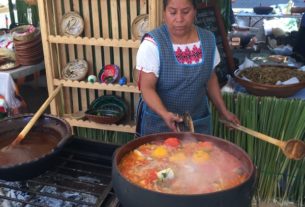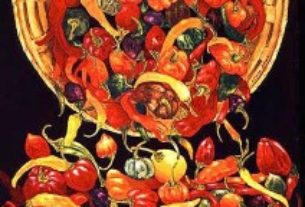It happens all the time when I am talking with a Mexican friend as we walk or drive. In the midst of riveting conversation, she stops mid-word to touch her head, heart and shoulders and I realize we are passing a church. While a familiar custom around the world, even cradle Catholics are mystified by Mexican customs with the sign of the cross.
In making the sign, the right hand touches the forehead, heart, then left and right shoulders saying: “In the name of the Father, and of the Son, and the Holy Spirit. Amen.” With this sign, Catholics renew the covenant made for them at Baptism, and reaffirm their trust and faith in God.
Most Mexicans also use an older form of consecration. This sign at the beginning of mass begins with smaller crosses formed over the forehead, lips and heart, ending with a larger normal cross. For some this is a reminder to, “keep Jesus in the mind, on the lips and in the heart.” For others, these smaller crosses are pledges in themselves, dedicating thoughts, words and loving deeds to God. The gesture invariably ends with a kiss to seal the pledge.
While the Old Testament tells of God protecting his chosen ones by placing his mark on them, it is believed that the sign of the cross comes from the letters of the ancient alphabets in which the Bible was originally written. In Hebrew and Greek, the letter Tau is drawn as T and translates as “the mark.” The Dead Sea Scrolls record the marking of converts’ foreheads with the Tau during Baptism. Early Greek Christians formed an X or Chi, the first letter of the Greek Christos to represent Jesus.
Second century writer Tertullian recorded, “We make the sign of the cross on our forehead at every turn, at our going in or coming out of the house, while dressing, while putting on our shoes, when we are taking a bath, before and after meals, when we light the lamps, when we go to bed or sit down, and in all the ordinary activities of daily life.”
And so it is in the life of a faithful Mexican. The Sign of the Cross marks a Catholic from birth to death, as it is traced on the forehead of each infant at birth and is repeated as a farewell when the soul makes the transition from this life.
The Mexican traces the sign all during each day, from the moment when he awakes, before and after his meals, as he leaves the house, asking God’s protection for his journey, as he passes, enters or leaves the church. He calls for the blessings of God on his work, his home and loved ones, and when he returns at the end of the day, he forms the sign again, in thanksgiving to be reunited once again with his family.
As his children go off to bed, they come to their parents for a bed-time blessing after their hugs and kisses.
Hearing of the death of a neighbor, encountering a speeding ambulance, making the first sale of the day, receiving news of the birth of a baby, or finding a solution to a problem, the Sign of the Cross is used all day as a plea for assistance, an assurance of gratitude and the acceptance of God’s will.
The Sign of the Cross is a refuge in moments of grief, fear, need and danger. It is a symbol of joy, thanksgiving, hope and gratitude. This rich gesture helps maintain continual contact with God as all day, every day people reinforce their faith and gain acceptance as they repeat the sign.
This article appears courtesy of the Chapala Review, a monthly Newspaper published in Ajijic, Jalisco, Mexico. The focus is the Lake Chapala area. The goal is to provide quality information about the area, its stories, events, history, culture and people.


